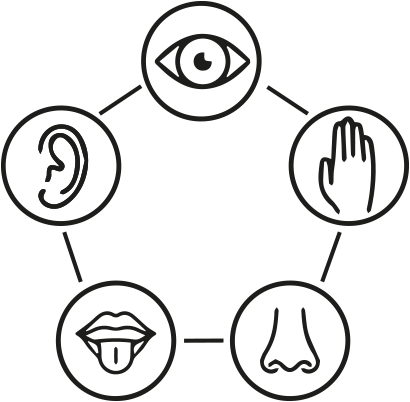Beyond Taste
| Beyond Taste
29 May, 2019 Led by:
|
| Intended learning outcomes (more on programme level)
Part of Marres’ Workshops ‘Training the Senses’. https://marres.org/en/program/training-the-senses-en/ |
| Learning objectives (course specific)
Explore the boundaries of taste. |
| Objective statement (course description)
Can we overcome the boundaries of taste? Supervised by food designer Katja Gruijters, students at ArtEZ Product Design Arnhem address these and other questions in a spectacular hands-on evening full of experiences. |
| Type of course :
extracurricular course |
| Target group :
general audience |
| Teaching method:
workshop |
| Activities
Start: As part of the Training the Senses program, students from product design Artez came with food designer Katja Gruijters to test a series of challenges revolving around the sense of Taste.
Training:
Examples of the instructions that come with the paper bags. E.g. 1: Step 1: place yourself in the taped square Step 2: leave the bag closed Step 3: crunch the bag, as much as possible Step 4: take the spoon Step 5: open the bag. “SURPRISE” Step 6: enjoy your meal 😉 E.g. 2: Step 1: place yourself in the taped square and open the bag Step 2: take out the chocolate Step 3: warm up the chocolate within the paper. You can use your full body to make the chocolate melt. Feel free! Step 4: wait till its really liquid Step 5 take a cracker and dip it in the chocolate E.g. 3 Step 1: place yourself in the taped square and open the bag Step 2: take out the stroopwafel Step 3: hold it in front of your face Step 4: look at it and count down from 30 – then take a bite Step 5: hold the waffle back in front of your face Step 6: repeat and count again down from 30 Step 7: repeat till the stroopwafel is empty. Take your time, enjoy! E.g. 4 Step 1: in front of you, you see a typical Dutch pastry. It’s known for its difficult way of eating. Step 2: place yourself in the taped square. Step 3: take out the chop-sticks. Step 4: eat the tompouce with the chopsticks “eet smakelijk” E.g. 5 Step 1: place yourself in the taped square and open the bag. Step 2: unwrap the candy Step 3: take the nutcracker and crack the candy Step 4: put the crushed candy in the yogurt. Step 5: invite someone from the public who hasn’t seen what you did and feed him/her Step 6: let the person guess what they are eating |
| Assessment of learning : N/A |
| Effect (witness account, evaluation of the course) |
Additional biblio sources (available at Marres)
|
